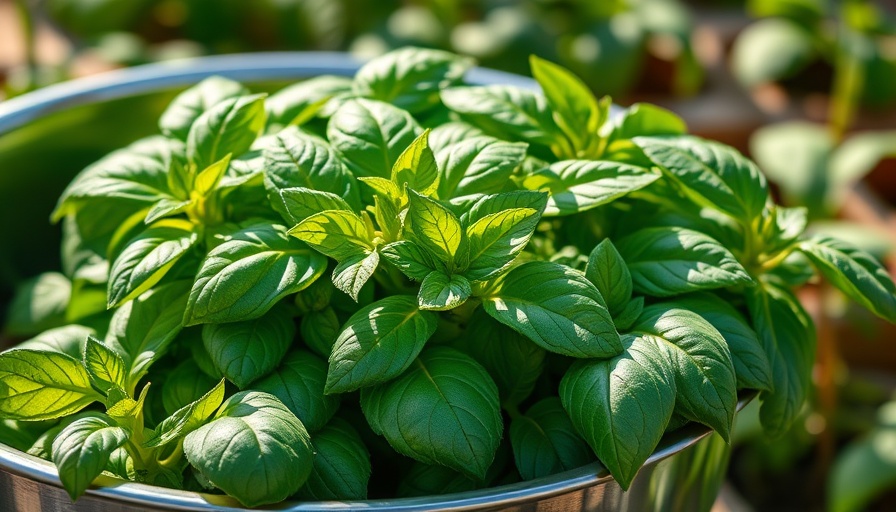
Discover the Joy of Growing Basil at Home
Basil is not just a flavor enhancer; it's a vibrant addition to your garden that can elevate every meal. As a versatile herb, it’s perfect for everything from fresh salads to savory dishes. Not to mention, it’s incredibly rewarding to grow this aromatic plant in your backyard or indoors! In this article, we’ll explore various methods and expert tips on how to cultivate basil and ensure it thrives in your space.
Why Grow Your Own Basil?
Many are familiar with the delightful taste of fresh basil in their culinary pursuits, yet few have explored the gratifying process of growing it themselves. Not only is it cost-effective, as a packet of seeds can yield many plants, but the satisfaction and flavor of homegrown basil are unparalleled. You'll find that the herbs you cultivate at home are often more aromatic and flavorful than those purchased from a store, providing a superior taste to your dishes.
The Fascinating History of Basil
Basil (Ocimum basilicum) has deep roots in various cultures. This hardy herb originated in Asia and spread globally, becoming a staple in Mediterranean cuisine. In Indian culture, basil is revered spiritually and medicinally, noted for its health benefits and used in Ayurvedic practices. The Greeks viewed basil as a symbol of mourning, used respectively in funerals, while in Italian kitchens, it shines in dishes like pesto and pizza. Understanding its rich history enriches the experience of growing and using basil!
Five Effective Methods for Growing Basil
There are several methods to grow basil, allowing anyone to get started, whether you have an expansive garden or limited indoor space.
1. Propagate from Store-Bought Plants
One of the simplest ways is to propagate cuttings from existing basil plants found in local grocery stores. Place a sprig in water, and watch as roots begin to form, transforming it into a new plant. This method is not only economical but also encourages you to care for and nurture your plants.
2. Starting from Seeds
Starting basil from seeds requires certain care, ensuring the soil is warm and well-drained. Germination is best indoors under controlled conditions, and once the danger of frost has passed, they can be transferred outdoors.
3. Direct Sowing
If you're ready to garden outdoors, consider direct sowing seeds into well-prepared soil. Basil thrives in a sunny spot, benefiting from 6-8 hours of sunlight each day.
4. Growing Indoors
To grow basil indoors, choose a sunny windowsill where it can bask in natural light. This method allows for a year-round supply of fresh herbs.
5. Dividing Existing Plants
If you have an established basil plant, consider dividing it to produce new plants. This promotes healthier growth and allows you to expand your herb garden.
Best Practices for Caring for Your Basil
To keep your basil robust and flavorful, here are some tips: pinch off the tops when harvesting to encourage bushier shapes, ensure they receive ample sunlight, and maintain a proper watering schedule. Basil prefers to be kept on the dry side, as overwatering can lead to root rot.
Health Benefits of Basil
Basil is not only a culinary delight but also offers impressive health benefits. With its rich content of antioxidants, it can fight inflammation and promote overall well-being. It has been utilized in various healing traditions, making it not just a luscious herb but also a natural medicine. Incorporating basil into your dishes is a flavorful way to enhance nutrition.
Conclusion: Your Next Steps in Gardening
Ready to start your basil journey? Whether you're planning a fragrant herb garden or enhancing your indoor plant collection, growing basil is both achievable and enjoyable. As you dig in, remember to relay your experiences and perhaps share the bounty with friends and family. Invite them to join you in the gardening fun! For those interested in expanding their gardening knowledge, consider exploring specialized gardening tools, resources, and community gardening projects. Happy gardening!
 Add Row
Add Row  Add
Add 




Write A Comment